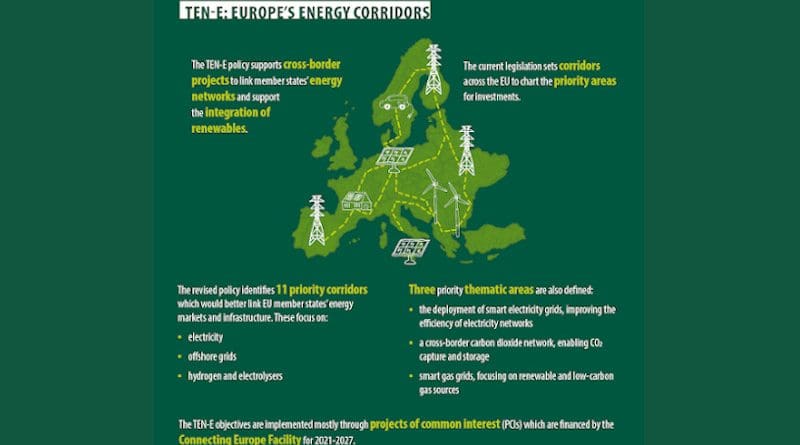EU Council Agrees On New Rules For Cross-Border Energy Infrastructure
The European Council this week reached a general approach on the revision of the Trans-European Networks for Energy (TEN-E) Regulation. The objective of the revised TEN-E regulation is to modernise, decarbonise and interconnect the EU’s cross-border energy infrastructure in order to help the EU achieve its 2050 climate neutrality objectives. The revised Regulation also aims to continue ensuring market integration, competitiveness and security of supply.
The revision of the TEN-E Regulation identifies 11 priority corridors and 3 priority thematic areas to develop and interconnect. This will be done mostly through projects of common interest (PCIs), financed by the Connecting Europe Facility for 2021-2027. The revised Regulation updates the infrastructure categories eligible for support with an emphasis on decarbonisation and adds a new focus on offshore electricity grids, hydrogen infrastructure and smart grids.
The Council, in its position, decided to end support for new natural gas and oil projects and to introduce mandatory sustainability criteria for all projects. During a transitional period until 31st December 2029, dedicated hydrogen assets converted from natural gas can be used to transport or store a pre-defined blend of hydrogen with natural gas or biomethane. Selected projects shall demonstrate how, by the end of this transitional period, these assets will cease to be natural gas assets and become dedicated hydrogen assets. The assessment of candidate projects will also ensure that the assets are designed in view of creating dedicated hydrogen assets by the end of the transitional period and do not lead to the prolongation of the lifetime of natural gas. The purpose is to gradually decarbonise this sector and increase the share of renewable gases in the pipelines.
In its position, the Council put a particular emphasis on energy from renewable sources regarding all assets, including smart gas grids.
In the case of Cyprus and Malta, that are still not interconnected to the trans-European gas network, projects under development or planning that have been granted the Project of Common Interest status under the previous Regulation will maintain their status until the interconnection is complete. The purpose of this exception is to end the isolation of these two member states and to give them access to future energy markets, including hydrogen.
The Council decided to include certain types of electrolysers that contribute to sustainability in the scope of the Regulation. Those electrolysers shall account for at least 100 MW capacity in a project. The production of hydrogen, particularly of renewable sources, from these electrolysers, shall comply with a life cycle greenhouse gas emissions savings requirement of 70% relative to a fossil fuel comparator of 94g CO2e/MJ.
Member States also agreed to simplify and accelerate permitting and authorisation procedures.
According to the Council’s position, the revised Regulation will continue to ensure that new projects respond to market integration, competitiveness and security of supply objectives. It will also continue to support projects that connect regions currently isolated from European energy markets, that strengthen existing cross-border interconnections and that promote cooperation with countries outside of the EU.

